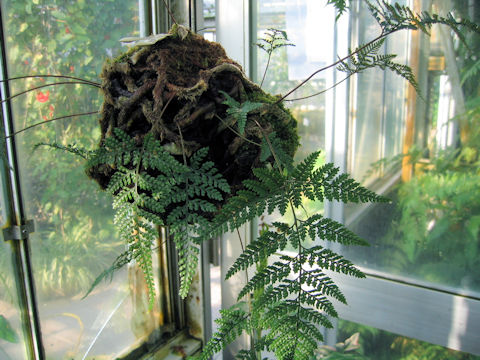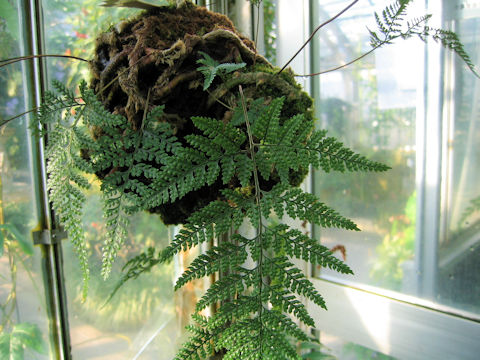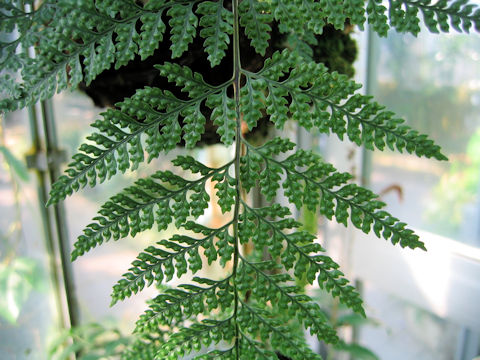 |






|

|
äp©çìAChɪzµÄ¢Ü·BíªÉ©¶·éuµÌÕiEjvÉæĢܷªAíΫÌV_Å·BªsÍâFÌØÐÉííêA·LÑĢܷBtÍv¿Å`A·³PTZ`ÙÇÉÈèAשØêÝÜ·Ba¼ÌuµÌÔvÍA¯µ¢âêÈÇÅàçÁÄϦEԱƩçBäpØêÅÍutóWáêâvAêÅÍutWAÎnibei gai yin shi juejvÆÄÎêÜ·B
|

|
VmuÈVmu®ÌíÎV_ÞÅAw¼Í Davallia tyermannii (syn. Humata tyermaniiAHumata griffithiana)Bp¼Í Bear's foot fernAWhite rabbit foot fernB
|

|
The Bear's foot fern (Davallia tyermannii) belongs to the family Davalliaceae. It is an evergreen fern that is distributed from Taiwan, southern China to India. It is very similar to the "Shinobu" (Davallia mariesii) that grows naturally in Japan, but it is an evergreen fern. The rhizome is covered with silvery white scales and grows long and crawls. The leaves are leathery, oval, about 15 cm long, and cut into small pieces. The Japanese name "Shinobu" is because it grows up and endures even in steep rocky areas. In Taiwanese Chinese, it is called "tóWáêâ" and "tWAÎn" (bei gai yin shi jue) in Chinese.
|

|
¤m§¼Ã®sçíæuRA¨vÉÄA2004N0110úBeB
|




